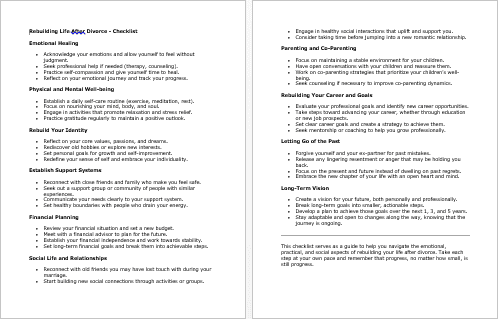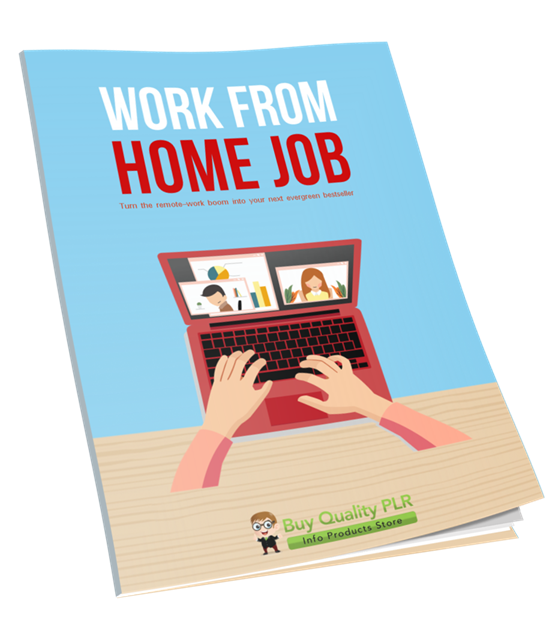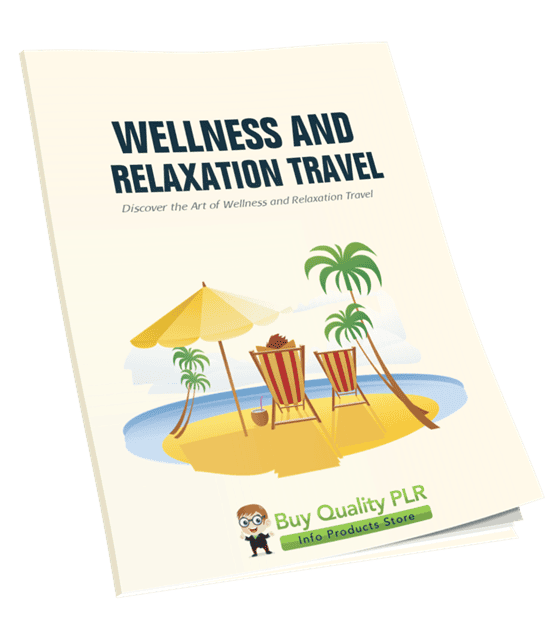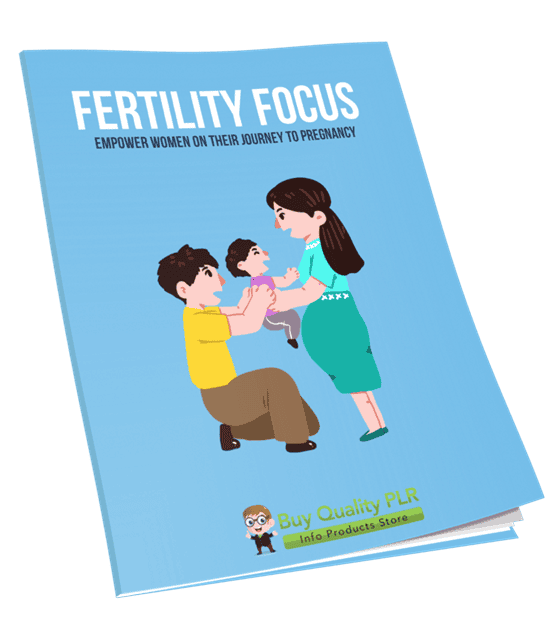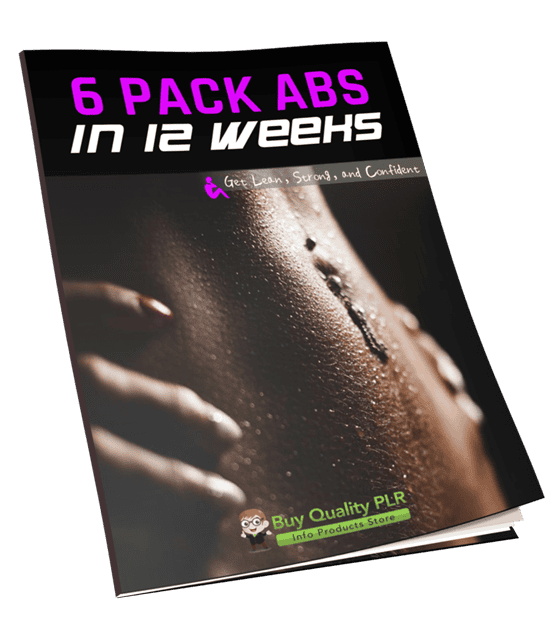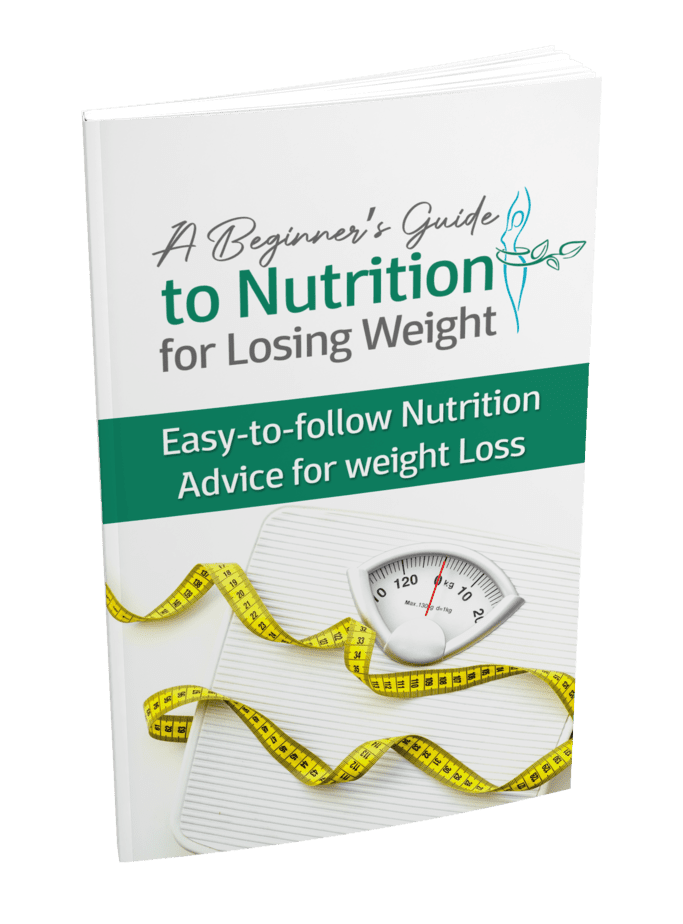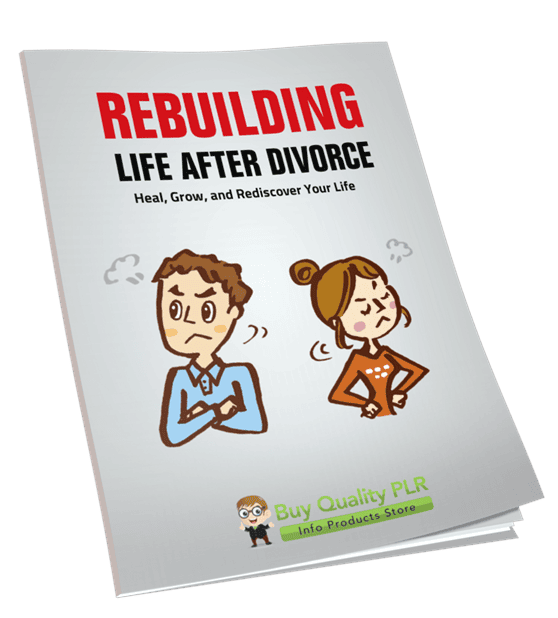
Rebuilding Life After Divorce PLR Course 18k Words
in PLR Checklists , PLR eBooks , PLR eCourses , PLR List Building Reports , Premium PLR , Premium PLR eBooks , Premium PLR Reports , Premium White Label Brandable PLR Coaching Courses , Private Label Rights Products , Self Help PLR , Self Help PLR eBooks , Wellness PLR , Wellness PLR eBooksChoose Your Desired Option(s)
has been added to your cart!
have been added to your cart!
#lifeafterdivorce #divorcerecovery #selfhelpcontent #wellnessplr #personalgrowth #plrcourse #healingjourney #newbeginnings #plrcontent
Rebuilding Life After Divorce PLR Course – Heal, Grow, and Rediscover Your Life
Divorce is one of life’s most challenging transitions. The emotional, mental, and practical adjustments can feel overwhelming, leaving you unsure of how to move forward. Rebuilding Life After Divorce PLR Course is designed to guide you through this difficult time with clarity, support, and actionable steps to reclaim your life, confidence, and happiness.
Whether you are a recently divorced individual, a counselor, coach, or wellness professional, this course offers practical strategies to heal, rebuild, and thrive after divorce. With 16,384 words of structured content, it’s ready to be used as a digital course, ebook, coaching program, or membership resource.
Presenting…
Rebuilding Life After Divorce PLR Course 18k Words
Why This Course is Essential
Divorce isn’t just a legal or logistical process—it’s an emotional journey that requires healing, self-reflection, and growth. Many people struggle with:
- Feeling lost or unsure of their identity after a relationship ends
- Emotional overwhelm, grief, or anger that feels difficult to manage
- Rebuilding routines, self-confidence, and social connections
- Planning for a fulfilling future as a single individual
This course provides step-by-step guidance, empowering learners to:
- Process emotions healthily and compassionately
- Rediscover personal identity and passions
- Build strong, supportive relationships
- Establish routines and lifestyle habits that promote growth
- Embrace a confident and hopeful new chapter
Course Structure: 5 Modules for Complete Transformation
The course is organized into five actionable modules, each containing four practical steps. Each module is designed to be interactive, reflective, and easy to follow, providing tools to regain control of your life and rebuild confidently.
Module 1: Acknowledging and Processing Your Emotions
The first step to rebuilding life is understanding and processing your emotions.
Step 1: Allow Yourself to Feel
- Recognize that sadness, anger, confusion, or fear are natural responses.
- Use journaling or conversations with trusted friends to process feelings.
Step 2: Identify Your Emotions
- Name your emotions to understand them better.
- Differentiate between grief, betrayal, fear, or anxiety about the future.
Step 3: Seek Support
- Connect with friends, family, therapists, or support groups.
- Sharing experiences reduces isolation and builds perspective.
Step 4: Practice Self-Compassion
- Treat yourself with the same care you’d give a friend.
- Recognize that healing is gradual and setbacks are normal.
Benefits: Module 1 lays a foundation for emotional resilience, self-awareness, and healing.
Module 2: Rediscovering Your Identity
Divorce often leaves people questioning who they are outside of the relationship. This module helps you reclaim individuality.
Step 1: Reflect on Your Values
- Identify your core values, passions, and dreams.
- Journaling reinforces self-awareness and future direction.
Step 2: Explore New Interests
- Take classes, pursue hobbies, or explore creative outlets.
- New experiences build joy, confidence, and independence.
Step 3: Reconnect with Old Friends
- Reach out to friends who may have drifted during marriage.
- Social connections reinforce support networks and self-identity.
Step 4: Set Personal Goals
- Define achievable short-term and long-term goals for career, health, and personal growth.
- Goals provide direction and a sense of accomplishment.
Benefits: Module 2 fosters personal empowerment, self-discovery, and renewed purpose.
Module 3: Building a Strong Support System
Healing is easier with supportive people around you. This module focuses on nurturing relationships that uplift and strengthen you.
Step 1: Identify Your Circle
- List people who provide encouragement, trust, and safety.
- Lean on them for advice, companionship, or emotional support.
Step 2: Communicate Your Needs
- Ask for help clearly—whether for listening, guidance, or shared activities.
- Clear communication strengthens relationships.
Step 3: Expand Your Network
- Join community groups, clubs, or online forums.
- Meet like-minded individuals to build new connections.
Step 4: Set Boundaries
- Protect your energy by limiting contact with negative or unsupportive people.
- Boundaries help maintain mental and emotional health.
Benefits: Module 3 emphasizes building resilience through connection, trust, and healthy boundaries.
Module 4: Creating a New Routine and Lifestyle
A stable routine promotes healing, productivity, and emotional stability. Module 4 guides you in creating daily habits that support a healthy and purposeful life.
Step 1: Design a Morning Routine
- Use meditation, exercise, or mindful practices to start your day intentionally.
Step 2: Declutter Your Space
- Remove items tied to past memories.
- Organize and simplify your environment for clarity and focus.
Step 3: Prioritize Self-Care
- Exercise, nutrition, relaxation, and hobbies enhance well-being.
Step 4: Plan for the Future
- Break long-term goals into small, achievable steps.
- Plan for personal, professional, and financial growth.
Benefits: Module 4 provides tools to create structure, balance, and self-care habits that encourage personal growth.
Module 5: Embracing a New Chapter with Confidence
The final module focuses on moving forward with positivity, empowerment, and resilience.
Step 1: Celebrate Your Progress
- Recognize small wins and milestones along your journey.
Step 2: Practice Gratitude
- Daily gratitude journaling shifts perspective toward positivity.
Step 3: Let Go of the Past
- Release resentment, guilt, or anger toward yourself and your ex-partner.
Step 4: Embrace the Unknown
- Approach your new life with curiosity, hope, and self-assurance.
Benefits: Module 5 equips learners to step confidently into a new phase of life with emotional freedom and optimism.
Bonus Materials
- Rebuilding Life After Divorce Checklist (465 words): Keep track of emotional, social, and lifestyle goals.
- FAQs (945 words): Answers to common questions on emotional recovery, social rebuilding, and personal growth.
- Salespage Copy (746 words): Ready-to-use promotional content for marketing the course.
Who Can Benefit
- Divorced Individuals: Practical guidance for emotional healing, personal growth, and rebuilding life.
- Life Coaches & Therapists: Offer as part of workshops, digital products, or counseling programs.
- Online Entrepreneurs: Repurpose as an ebook, membership course, or lead magnet.
- Support Groups: Use as structured curriculum for community programs or seminars.
How to Use and Profit from the Course
- Sell the Full Course as a digital product to clients or online audiences.
- Split into Micro-Modules and sell individually ($10–$20 each).
- Bundle with Other PLR Products for premium packages ($47–$97).
- Membership Site Content: Offer ongoing access for recurring revenue.
- Convert to Audio or Video Lessons for coaching programs or webinars.
- Lead Magnets & Blog Content: Excerpt sections to attract email subscribers.
- Flip as a Standalone Site/Product: Use the course to create a ready-made resource for resale.
Licensing Terms
Permissions:
- Sell or repurpose as-is or edit.
- Claim copyright after modifying 75% of the content.
- Use in digital courses, workshops, coaching, or webinars.
Restrictions:
- Cannot transfer PLR rights to buyers.
- Maximum affiliate commission: 75%.
- Cannot give full content away for free.
- Cannot bundle without additional purchase.
Why This Course Stands Out
- 16,384 words of structured, actionable content.
- Designed for emotional healing, self-growth, and life reconstruction after divorce.
- Step-by-step guidance with clear activities for reflection, journaling, and action.
- Bonus checklist, FAQs, and prewritten sales page included.
- Flexible PLR content for digital products, coaching, workshops, or personal use.
Take the first step toward healing and rediscovery with the Rebuilding Life After Divorce PLR Course. Use it to empower yourself or others, while creating a profitable resource for your online business.
has been added to your cart!
have been added to your cart!
Here A Sample of Rebuilding Life After Divorce PLR Course
Welcome to this journey of healing, growth, and rediscovery! This course is designed to help you navigate life after divorce with clarity, confidence, and hope. Each module is broken down into simple, actionable steps to guide you through the process. Let’s take this step by step, together.
Module 1: Acknowledging and Processing Your Emotions
Goal: Understand and process your feelings to begin healing.
Step 1: Allow Yourself to Feel
Introduction
Emotions are a natural response to life’s experiences, and learning to acknowledge and process them is essential for personal growth and well-being. When faced with challenging situations, many people suppress their emotions in an attempt to stay strong, maintain control, or avoid discomfort. However, denying emotions can lead to increased stress, emotional exhaustion, and long-term mental health challenges.
This step is about granting yourself the freedom to feel without judgment. It is okay to feel sad, angry, confused, or overwhelmed. These emotions are valid, and allowing yourself to experience them is the first step toward healing and emotional resilience.
Step-by-Step Guide to Allowing Yourself to Feel
1. Recognize That Your Feelings Are Valid
- Understand that emotions are neither good nor bad—they simply exist.
- Avoid dismissing or belittling your own emotions. Saying things like “I shouldn’t feel this way” or “I need to get over it” can create inner resistance and prolong emotional distress.
- Instead, remind yourself: “It’s okay to feel this way. My emotions are a part of my experience.”
2. Identify and Name Your Emotions
- Take a moment to identify what you are feeling. Sometimes, emotions can be complex, and breaking them down can bring clarity.
- Use a Feelings Wheel (an internationally recognized psychological tool) to pinpoint the specific emotions you are experiencing.
- Write down your emotions using simple statements, such as:
- “I feel frustrated because I wasn’t understood in my last conversation.”
- “I feel anxious about the uncertainty of my future.”
- “I feel sad because I lost something meaningful to me.”
3. Create a Safe Space for Your Emotions
- Find a quiet and comfortable environment where you can sit with your emotions without external distractions.
- Set aside dedicated time (at least 10–15 minutes) to acknowledge and process what you’re feeling.
- If possible, avoid suppressing emotions in stressful environments (e.g., at work or in public). Instead, schedule time for self-reflection when you have privacy.
4. Express Your Emotions in a Healthy Way
- Journaling: Writing down your emotions can provide clarity and emotional relief. Try free-writing for five minutes, allowing your thoughts to flow without censorship.
- Talking to a Trusted Person: Verbalizing your emotions with a supportive friend, family member, therapist, or coach can help you feel heard and understood.
- Creative Outlets: Express your emotions through art, music, poetry, or movement (such as dancing or stretching).
5. Practice Self-Compassion
- Avoid self-criticism for experiencing certain emotions. Instead of saying, “I shouldn’t be so emotional,” try, “I am human, and feeling emotions is part of my experience.”
- Be kind to yourself, just as you would to a close friend experiencing similar emotions.
- Engage in self-care practices such as deep breathing, meditation, or a warm cup of tea to soothe your nervous system.
6. Accept That Emotions Are Temporary
- Remind yourself that emotions come and go like waves.
- Instead of fearing difficult emotions, allow yourself to experience them fully, knowing they will pass in time.
- Use the phrase: “This feeling is temporary, and I will get through it.”
Final Thoughts
Allowing yourself to feel is a crucial first step in emotional resilience. By embracing your emotions with self-compassion, you create space for healing, growth, and self-awareness. Rather than viewing emotions as obstacles, see them as signals guiding you toward a deeper understanding of yourself and your needs.
In the next step, we will explore how to process and release emotions in a healthy and constructive way.
Step 2: Identify Your Emotions
Introduction
Once you have given yourself permission to feel, the next crucial step is identifying your emotions. Understanding what you are experiencing emotionally allows you to process your feelings more effectively, communicate them clearly, and work toward healing.
Often, emotions can feel overwhelming or confusing, especially in times of distress. You might feel a mix of sadness, anger, fear, or uncertainty, but without defining these feelings, they can remain tangled, making it harder to move forward. Taking time to name your emotions with clarity gives you power over them rather than allowing them to control you.
Step-by-Step Guide to Identifying Your Emotions
1. Find a Quiet Space to Reflect
- Set aside 10–15 minutes to focus on your emotions without distractions.
- Choose a place where you feel comfortable and safe, whether it’s a quiet room, a park, or a peaceful corner in your home.
- Take a few deep breaths to center yourself before beginning.
2. Acknowledge That Emotions Can Be Complex
- It’s common to experience more than one emotion at the same time. You may feel both sadness and relief, anger and guilt, or anxiety and hope.
- Instead of rushing to label one dominant emotion, allow yourself to explore the layers of what you’re feeling.
3. Use a Feelings Wheel or Emotion List
- Many people struggle to identify their emotions beyond basic categories like “happy” or “sad.” A Feelings Wheel or an emotion vocabulary list can help you pinpoint the exact emotion you are experiencing.
- Start with broad categories (such as sadness, anger, fear, or happiness), then narrow them down:
- Sadness → Grief, disappointment, loneliness, regret
- Anger → Betrayal, frustration, resentment, irritation
- Fear → Anxiety, insecurity, uncertainty, helplessness
- Happiness → Relief, gratitude, hope, pride
4. Ask Yourself Key Questions
To deepen your understanding of your emotions, reflect on the following questions:
- What triggered this feeling? Was it a specific event, a person’s words, or an internal thought?
- What am I grieving or struggling with? Is it the loss of a relationship, a missed opportunity, or a fear of the future?
- Where do I feel this emotion in my body? Some emotions manifest physically—tightness in the chest, a lump in the throat, or a feeling of exhaustion.
- How would I describe this feeling to a close friend? If you had to explain your emotions to someone, how would you phrase it?
5. Write It Down: Journaling for Emotional Clarity
- Keep a journal where you can freely express your emotions. Write down:
- “Right now, I feel ______ because ______.”
- “The strongest emotion I am experiencing is ______, and it feels like ______.”
- “What I need most right now is ______.”
- Journaling reduces emotional overwhelm and helps you track emotional patterns over time.
6. Speak Your Emotions Aloud
- Saying your emotions out loud can help make them more real and manageable.
- You can talk to yourself in front of a mirror, record a voice note, or share your thoughts with a trusted friend or therapist.
- Example: “I feel abandoned because my partner left me, and I am scared about what the future holds.”
7. Accept and Validate Your Emotions
- Avoid judging yourself for feeling a certain way.
- Instead of saying, “I shouldn’t feel this way,” try:
- “It’s okay that I feel hurt. This is a natural reaction.”
- “I recognize my emotions, and I am working through them.”
- Self-validation helps prevent emotional suppression and encourages healing.
Final Thoughts
Identifying your emotions is a critical step toward emotional clarity and healing. When you name your feelings, you gain a deeper understanding of yourself and your needs. Instead of being consumed by emotions, you begin to navigate them with awareness and control.
In the next step, we will explore how to process and manage these emotions in a healthy and constructive way.
Step 3: Seek Support
Introduction
Emotional healing is not meant to be a solitary journey. Seeking support is a crucial step in navigating challenging emotions, as it allows you to share your experiences, gain perspective, and feel understood. You do not have to go through this alone. Whether you turn to friends, family, a professional therapist, or a support group, connecting with others can provide comfort, reassurance, and practical guidance.
Many people hesitate to seek support due to feelings of shame, fear of judgment, or a belief that they must handle everything on their own. However, reaching out is not a sign of weakness—it is an act of self-care and courage. Humans are inherently social beings, and leaning on others during difficult times can make a significant difference in emotional well-being.
Step-by-Step Guide to Seeking Support
1. Recognize That Seeking Support Is a Strength
- Acknowledge that everyone needs support at some point in life. No one is meant to handle life’s challenges entirely alone.
- Challenge limiting beliefs that may be preventing you from reaching out. Instead of thinking, “I should be strong enough to handle this on my own,” reframe it to, “Seeking support will help me heal and grow.”
- Remind yourself that others genuinely want to help. Often, loved ones or support professionals feel honored to be there for you.
2. Identify Who You Can Turn To
Consider different sources of support and identify those who can offer the type of help you need:
✅ Friends and Family:
- Reach out to someone who listens without judgment.
- Choose a trusted person who makes you feel safe and understood.
- If you are unsure who to talk to, start with someone who has supported you in the past.
✅ Professional Support:
- Therapists and Counselors: Licensed professionals provide guidance, coping strategies, and a safe space to process emotions.
- Coaches and Mentors: If you need guidance on personal development, career transitions, or relationship challenges, a life coach or mentor can provide structured support.
✅ Support Groups:
- Connecting with others who have experienced similar struggles can be incredibly validating.
- Look for local or online support groups related to grief, anxiety, relationships, or personal growth.
- Many organizations offer anonymous support if privacy is a concern.
✅ Community and Spiritual Support:
- Religious or spiritual leaders can provide emotional and moral support if faith plays a role in your life.
- Community centers, clubs, or volunteer organizations may offer support networks where you can feel connected.
3. Choose the Right Way to Reach Out
- Decide on a method of communication that feels comfortable for you:
- A phone call or video chat for a more personal connection.
- A text or message if speaking feels overwhelming at first.
- A face-to-face meeting if you prefer direct support.
- Be honest about what you need:
- If you need someone to just listen, say: “I don’t need advice right now, but I’d really appreciate someone to talk to.”
- If you need guidance, ask: “Can you help me think through this situation?”
- If you need reassurance, say: “I’m feeling overwhelmed and just need to hear that things will get better.”
- If you need someone to just listen, say: “I don’t need advice right now, but I’d really appreciate someone to talk to.”
4. Consider Professional Help If Needed
- If emotions feel overwhelming, persistent, or unmanageable, seeking professional therapy or counseling can be a game-changer.
- Therapy is not just for extreme cases—it can help with everyday challenges, improving self-awareness and coping skills.
- Online therapy options are available if in-person visits feel difficult. Platforms like BetterHelp, Talkspace, or local telehealth services offer virtual counseling.
5. Join a Support Group
- Support groups provide a sense of belonging and connection with people who understand your experiences.
- Many support groups are available in different formats:
- Local in-person meetings (community centers, hospitals, or wellness programs).
- Online forums and chat groups (Facebook groups, Reddit communities, mental health websites).
- Therapist-led support groups for more structured guidance.
- Local in-person meetings (community centers, hospitals, or wellness programs).
- Sharing in a group setting helps you realize you are not alone and offers valuable perspectives from others who have been through similar situations.
6. Set Boundaries with Unsupportive People
- Not everyone will provide the support you need, and that’s okay.
- If someone dismisses or invalidates your feelings, you have the right to limit your interactions with them.
- Seek support from those who uplift and encourage you rather than those who criticize or make you feel worse.
7. Be Open to Receiving Help
- Accepting help can be difficult if you are used to being independent, but it is essential for healing.
- When someone offers support, respond with openness:
- “Thank you for listening. That means a lot.”
- “I really appreciate your support right now.”
- “I could use some help figuring this out.”
- If someone offers practical help (like running errands, cooking a meal, or checking in on you), allow yourself to say yes.
Final Thoughts
Seeking support is a powerful step toward emotional resilience. Whether you confide in a friend, work with a therapist, or join a support group, connecting with others helps lighten the emotional burden.
Remember: You are not alone, and there are people who genuinely care about your well-being. In the next step, we will explore how to take small but meaningful actions toward healing and moving forward.
Step 4: Practice Self-Compassion
Introduction
Self-compassion is the practice of treating yourself with the same kindness, understanding, and patience that you would offer a close friend. It is a crucial part of emotional healing, especially during difficult times. Instead of being self-critical or blaming yourself, self-compassion allows you to acknowledge your struggles with gentleness and care.
Healing takes time, and it’s okay to not have all the answers right away. By practicing self-compassion, you give yourself permission to process emotions without judgment and build resilience in the face of hardship.
Step-by-Step Guide to Practicing Self-Compassion
1. Recognize and Challenge Self-Criticism
- Pay attention to your inner dialogue. Are you speaking to yourself with kindness, or are you being overly critical?
- If you catch yourself using harsh words like, “I should be over this already,” or “I always mess things up,” pause and reframe your thoughts.
- Replace self-criticism with more compassionate self-talk:
- Instead of “I failed,” say “I’m doing my best, and that’s enough.”
- Instead of “I should be stronger,” say “It’s okay to struggle. I deserve kindness too.”
- Instead of “I failed,” say “I’m doing my best, and that’s enough.”
2. Treat Yourself as You Would a Friend
- Imagine your best friend was going through the same experience. How would you support them?
- Would you tell them to be harder on themselves, or would you offer comfort, reassurance, and encouragement?
- Now, apply that same level of care and kindness to yourself.
- Use affirmations such as:
- “I am allowed to feel this way, and I will move forward at my own pace.”
- “I deserve the same kindness I offer others.”
3. Acknowledge That Healing Takes Time
- Emotional pain does not disappear overnight, and forcing yourself to “move on” too quickly can actually slow the healing process.
- Understand that healing is not linear—there will be good days and bad days, and that’s completely normal.
- Give yourself permission to take things one step at a time without pressure.
4. Practice Self-Care Without Guilt
Taking care of yourself is an essential part of self-compassion. Self-care is not selfish; it is a necessary step in the healing process.
- Prioritize rest: Allow yourself to take breaks and avoid burnout.
- Engage in activities that bring comfort: Reading, journaling, listening to music, or taking a warm bath can help soothe emotions.
- Eat nourishing foods: Nutrition plays a vital role in emotional well-being.
- Move your body gently: Whether it’s stretching, walking, or yoga, physical movement can help release tension.
5. Let Go of Unrealistic Expectations
- Many people feel pressure to “bounce back” quickly, but there is no set timeline for healing.
- Avoid comparing your journey to others—everyone’s process is different.
- Instead of aiming for perfection, focus on progress, no matter how small.
6. Allow Yourself to Feel Without Judgment
- It’s okay to have difficult emotions. Feeling sad, frustrated, or lost does not mean you are weak.
- Suppressing emotions can lead to more distress later on.
- Instead of saying, “I shouldn’t feel this way,” acknowledge, “I am experiencing pain, and that is valid.”
- Remind yourself: “I am human, and humans have emotions. I don’t need to justify them.”
7. Use Positive Affirmations
Daily affirmations can help shift your mindset towards self-compassion. Repeat phrases like:
- “I am worthy of love and care.”
- “I will treat myself with patience and kindness.”
- “It’s okay to not have everything figured out right now.”
You can say these affirmations out loud, write them in a journal, or place reminders around your space.
8. Forgive Yourself for Past Mistakes
- Mistakes are part of growth. Holding onto guilt or shame prevents you from moving forward.
- Practice self-forgiveness by acknowledging past actions and focusing on what you’ve learned.
- Say to yourself: “I did the best I could with what I knew at the time.”
9. Surround Yourself with Compassionate People
- Spend time with those who uplift you and remind you of your worth.
- If someone in your life is overly critical, limit your interactions with them.
Seek relationships that encourage healing rather than those that reinforce self-doubt.
10. Practice Mindfulness and Meditation
- Being present in the moment helps reduce self-judgment.
- Try mindfulness techniques such as deep breathing, guided meditation, or gratitude journaling.
- When negative thoughts arise, observe them without attachment and let them pass.
Final Thoughts
Practicing self-compassion is an ongoing process, but it is one of the most powerful tools for healing and emotional well-being. By being kind to yourself, acknowledging your emotions without judgment, and prioritizing self-care, you create a foundation for growth and resilience.
In the next step, we will explore how to take meaningful actions toward rebuilding confidence and moving forward.
We’re also giving these extra bonuses
Rebuilding Life After Divorce – Checklist
Rebuilding Life After Divorce – FAQs

Rebuilding Life After Divorce – Salespage Content

Package Details:
Word Count: 16 384 Words
Number of Pages: 80
Rebuilding Life After Divorce – Bonus Content
Checklist
Word Count: 465 words
FAQs
Word Count: 945 words
Salespage Content
Word Count: 746 words
Total Word Count: 18 543 Words
Your PLR License Terms
PERMISSIONS: What Can You Do With These Materials?
Sell the content basically as it is (with some minor tweaks to make it “yours”).
If you are going to claim copyright to anything created with this content, then you must substantially change at 75% of the content to distinguish yourself from other licensees.
Break up the content into small portions to sell as individual reports for $10-$20 each.
Bundle the content with other existing content to create larger products for $47-$97 each.
Setup your own membership site with the content and generate monthly residual payments!
Take the content and convert it into a multiple-week “eclass” that you charge $297-$497 to access!
Use the content to create a “physical” product that you sell for premium prices!
Convert it to audios, videos, membership site content and more.
Excerpt and / or edit portions of the content to give away for free as blog posts, reports, etc. to use as lead magnets, incentives and more!
Create your own original product from it, set it up at a site and “flip” the site for megabucks!
RESTRICTIONS: What Can’t You Do With These Materials?
To protect the value of these products, you may not pass on the rights to your customers. This means that your customers may not have PLR rights or reprint / resell rights passed on to them.
You may not pass on any kind of licensing (PLR, reprint / resell, etc.) to ANY offer created from ANY PORTION OF this content that would allow additional people to sell or give away any portion of the content contained in this package.
You may not offer 100% commission to affiliates selling your version / copy of this product. The maximum affiliate commission you may pay out for offers created that include parts of this content is 75%.
You are not permitted to give the complete materials away in their current state for free – they must be sold. They must be excerpted and / or edited to be given away, unless otherwise noted. Example: You ARE permitted to excerpt portions of content for blog posts, lead magnets, etc.
You may not add this content to any part of an existing customer order that would not require them to make an additional purchase. (IE You cannot add it to a package, membership site, etc. that customers have ALREADY paid for.)
Share Now!

